Maintaining Hydraulic Steering With Dometic Marine
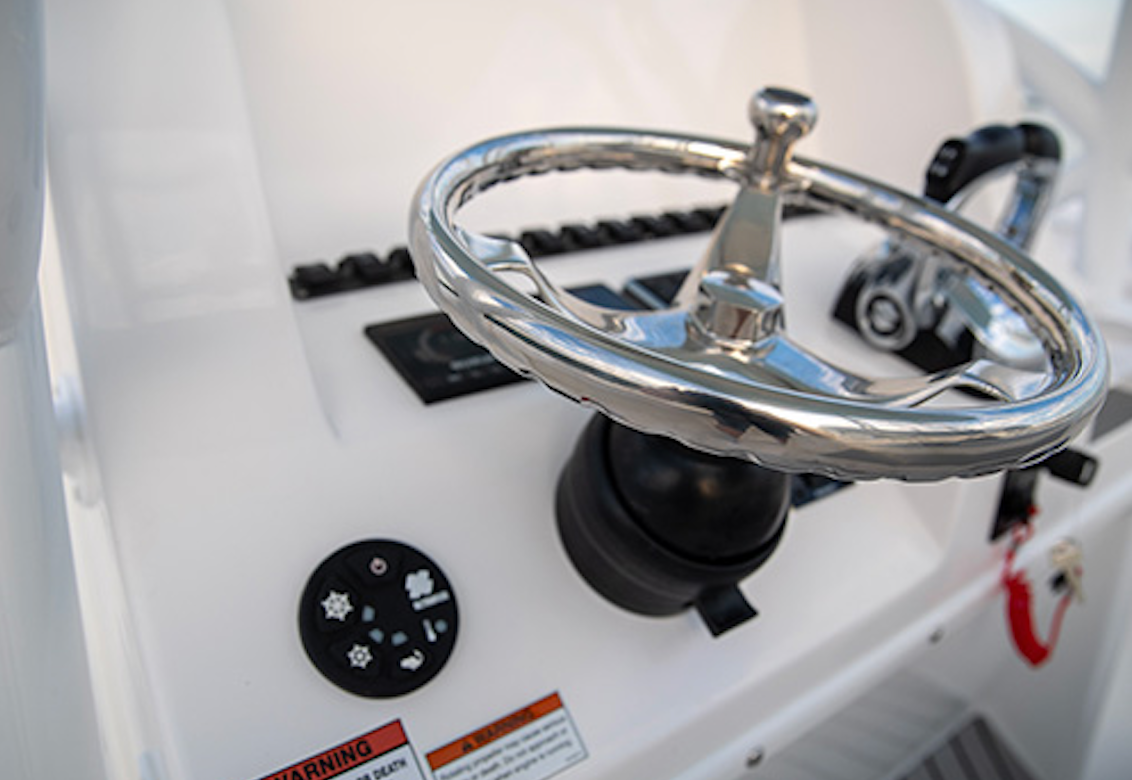
Experienced boaters know that regular inspection, preventative maintenance and fixing small problems before they become large ones are the keys to trouble-free time on the water. Many owners, however, tend to overlook their boat’s hydraulic steering systems when it comes to providing this care.
This isn’t surprising, given these systems’ overall reliability and durability in the marine environment. Owners of outboard-powered boats have come to expect smooth, easy steering control and rarely think about steering system components until they wear out or need repair. According to Brian Dudra, Vice President/General Manager for Dometic Marine, boaters can ensure trouble-free steering and extend the life of hydraulic steering system components through simple inspections and maintenance steps.
Expert Advice
“While each of our hydraulic systems is designed for the harsh marine environment, like any critical control system, it requires periodic checks and maintenance,” Dudra said. “Per your owner’s manual and product labels, hydraulic steering systems should be inspected prior to every use for fluid level, steering response, leaks, or worn/binding components.” In addition, most systems require minimal maintenance from a qualified dealer every six months for detailed inspections and greasing of key areas, he adds.

Key areas on outboard hydraulic steering systems include hoses, connections, the steering cylinder and shaft, the support arm, the tiller-arm connection, the helm where the wheel attaches, the steering wheel, and the hydraulic fluid. Here’s how to inspect and care for each of these areas.
Check the Helm
Starting with the helm, make sure the steering cylinder and hydraulic-hose connections are tight. Dudra recommends greasing the helm shaft when installing the steering wheel to facilitate easier removal in the future. Check the hydraulic fluid level inside the helm by unscrewing the fill plug and looking inside. The level should be 1/8” (.32 cm) to ¼” (.64 cm) below the lowest thread in the fill port. If the fluid is lower than this, fill the helm to the proper level, but avoid over-filling.
Check the steering response when turning the wheel. It should respond within a quarter turn. If not, the system might need fluid or there might be air in the system, which requires purging. For tilt-and-lock steering helms, also make sure that the plastic covers are properly secured in place.
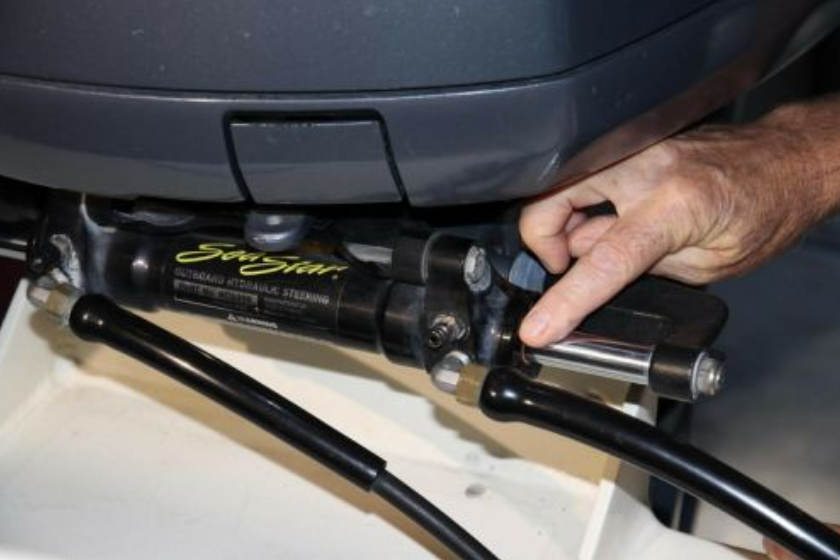
Inspect Hoses & Fittings
Next, it’s time to give hydraulic hoses the once over. When inspecting these hoses, run your hand down them to feel for cuts, chafing, or cracks. If you discover this kind of wear, have a qualified service shop replace the suspect hoses.
Also, inspect the hose fittings to ensure they are tight. Feel for hydraulic fluid leaks or weeps by running a finger around the fitting. If you find a leak, try tightening the fitting. If that fails to stem the leak, arrange to have a qualified service shop address the issue.
Examine the Steering Cylinder & Glands for Leaks and Wear
Most outboard-powered boats use front-mounted hydraulic steering cylinders. They are built to provide years of smooth operation, even if they were being constantly splashed with salt water. Still, the cylinder itself should be periodically inspected. Regular inspections should focus on the cylinder hose connections and glands on each end of the cylinder to ensure that there are no leaks.
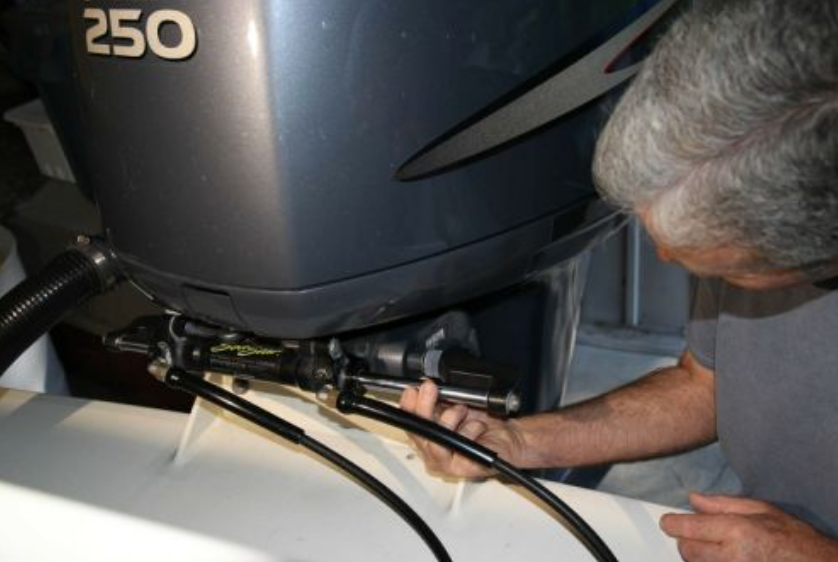
Inspect the glands, which contain seals, on the ends of the steering cylinder by running your finger around the edges. If you discover fluid weeping from the glands, it’s time to replace them with new ones using authentic SeaStar parts.
Give special attention to the steering cylinder’s shaft and support rod. Carefully inspect the cylinder shaft for corrosion, nicks, scratches, or salt buildup (depending on where you travel) that might damage the cylinder. Any major damage might require replacement of the entire cylinder.
Apply a thin film of grease to the visible portions of the support rod. The rod should be removed and inspected annually. The support rod and outboard tilt tube must be cleaned of all old grease and debris prior to re-applying quality marine grease before re-installing.
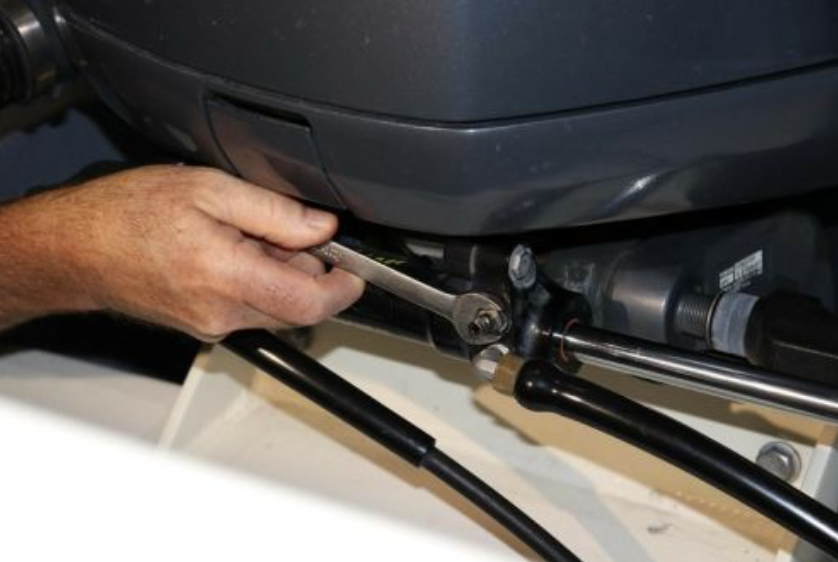
Fix Leaks Where You Find Them
If the hose fittings are weeping fluid, the hoses might require replacement. The same applies to the glands, which seal and wipe the cylinder rod as the cylinder moves back and forth, as mentioned earlier. SeaStar offers a gland replacement kit and O-ring seals for the bleeders and other fittings to fix leaks in this area.
If you follow the provided instructions carefully, fixing leaks in this way is a relatively easy job for competent DIY boaters. You can also turn the job over to a qualified marine shop. To ensure the steering is secure and tight, check all of the assembly nuts for proper tightness, including the adjusting nut on the starboard side of the support rod, which helps remove slack from the steering system.
Purge Air from the System
Air in the hydraulic steering system can cause sloppy, unresponsive steering and noisy operation. It can even make your boat unsafe. Air can find its way into the hydraulic system through leaks or when replacing any of the system’s key components. It must be purged through a process called “bleeding.” Your owner’s manual will explain the process if you want to do it yourself, but it usually requires two people and can become messy from spilled and expelled hydraulic fluid. If you lack the confidence, tools, or manpower to get the job done, ask a qualified marine shop to handle this.
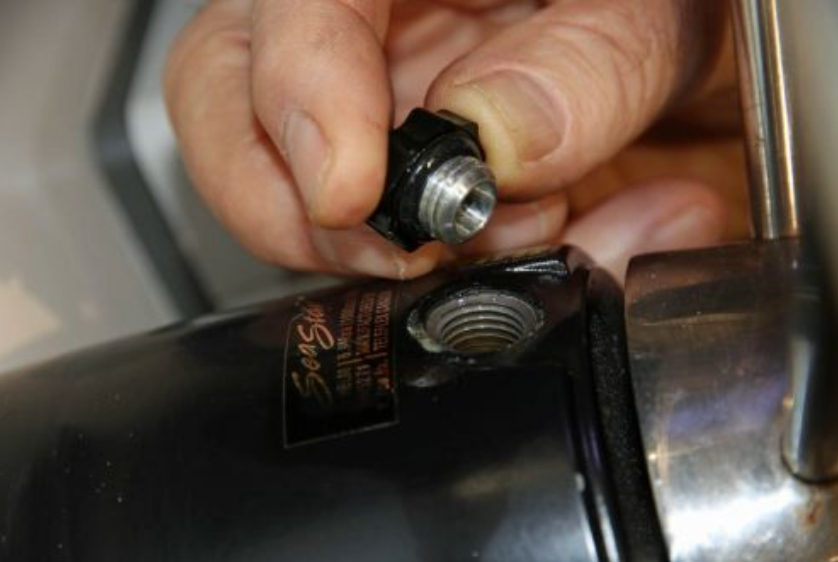
Check for Water Intrusion
You also want to make sure that water hasn’t made its way into the system, where it can cause damage and internal corrosion. “This is a subjective examination, but can be performed by taking a syringe and sampling the fluid in the helm reservoir,” Dudra advises. “If the fluid looks like ‘chocolate milk,’ then the fluid is likely contaminated with water.” If this occurs, the entire system must be inspected for leaks. Once these are fixed, the system should be flushed thoroughly with clean oil to remove any contaminated oil that can cause future internal damage.
One Good Turn Deserves Another
Inspecting your boat’s hydraulic steering system twice each year and taking care of any small issues when you find them will help ensure optimum performance and years of trouble-free boating.
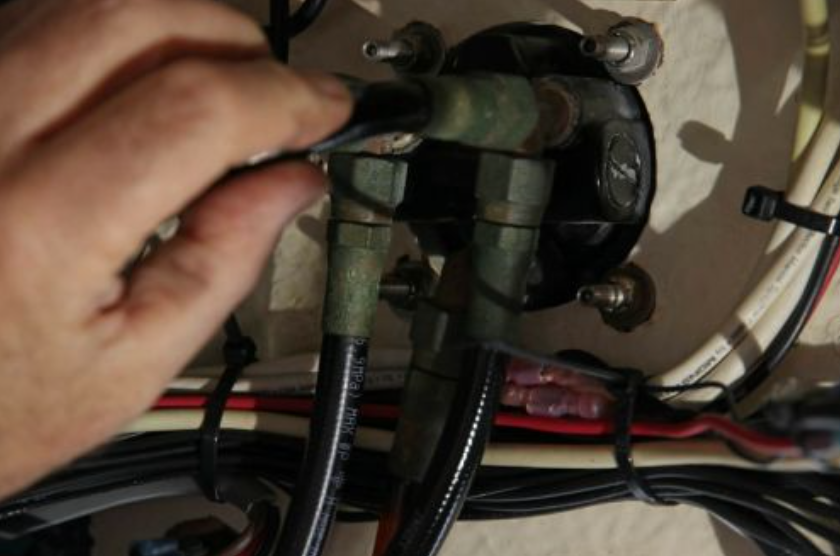
“Steering is a vital control component on your boat,” says Dudra. “The ability to safely and confidently maneuver at speed or in close quarters makes for an enjoyable and safe day on the water.”